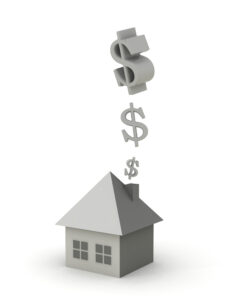
Choosing a new heating system for your home requires balancing several different factors. One you’ll pay close attention to is the energy efficiency rating of the new heater. The number matters because you want to find a system that will save you money and help the environment with its performance.
But energy efficiency ratings can be a bit confusing and people often are unaware of what a higher rating means. Below, we’ve provided some essential information to help you understand how ratings work for furnaces and heat pumps.
Efficiency Is the Maximum, Not the Average
The efficiency rating for a given piece of heating equipment is not a guarantee that the heater will always run at that efficiency when it’s on. The rating is the maximum efficiency operation, but most of the time the heater will operate at a lower efficiency. It’s not much different than the maximum speed for a vehicle—it can go that fast, but you won’t be driving it that fast during your daily commute.
It’s important to know this because choosing the highest-efficiency system you can afford doesn’t automatically guarantee you’ll save a lot of money. If the heater is not the right one for the house or isn’t sized accurately, it may not even get near that maximum performance. Working with professionals to find the ideal system for a house and seeing that it’s sized correctly is crucial if you want a high-efficiency system to deliver the savings and heating performance you want.
AFUE: The Furnace Efficiency Rating
The measure of efficiency for furnaces is AFUE (Annual Fuel Utilization Efficiency), which measures the percent of the fuel source the furnace converts into heat energy as a percentage. A gas furnace with 90% AFUE converts 90% of its natural gas into heat for the house, losing 10% to exhaust. To earn the ENERGY STAR label from the US Department of Energy, a gas furnace must have an AFUE of 95% or higher. All-electric furnaces have an AFUE of 100% because they don’t have exhaust loss. However, this doesn’t mean they cost less to run because of the higher cost of electricity.
HSPF: The Heat Pump Efficiency Rating
Heat pumps have two efficiency ratings, SEER and HSPF. SEER covers the heat pump in cooling mode, and HSPF (which stands for Heating Seasonal Performance Factor) is for heating mode, so that’s the one we’re talking about here. Both are figured in the same way, which is a ratio of heat moved per watt-hours of electricity. Heat pumps are less efficient in heating mode, so HSPF is always lower than SEER. The minimum HSPF for ENERGY STAR certification is 8.5, while the same heat pump will have a SEER of 15. However, compared to electric furnaces, a heat pump consumes much less electrical power and costs less to run in heating mode.
We’re the local experts when it comes to energy-efficient air conditioning and heating for Stockton, CA. We’ll see you end up with a new heater that will help you live green and save green.
With the help of Greenhart, you can Live Green, Save Green! Consult with us about the best high-efficiency HVAC system for your home.

